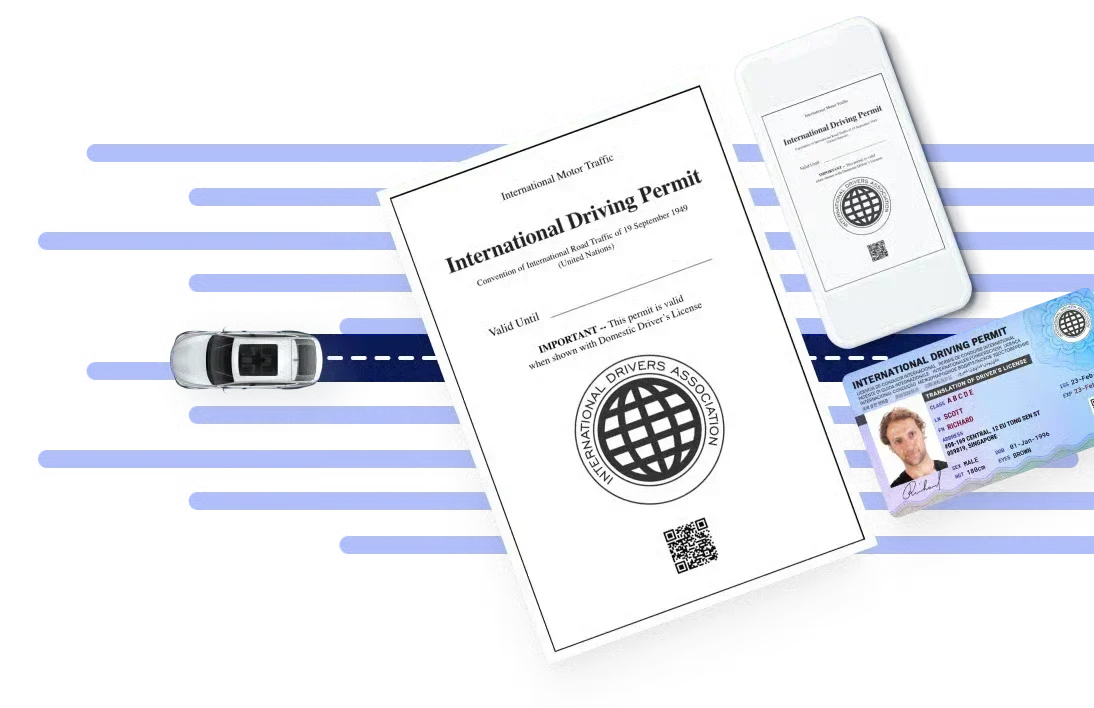Best Places to Visit in Bhutan for Indian Travelers
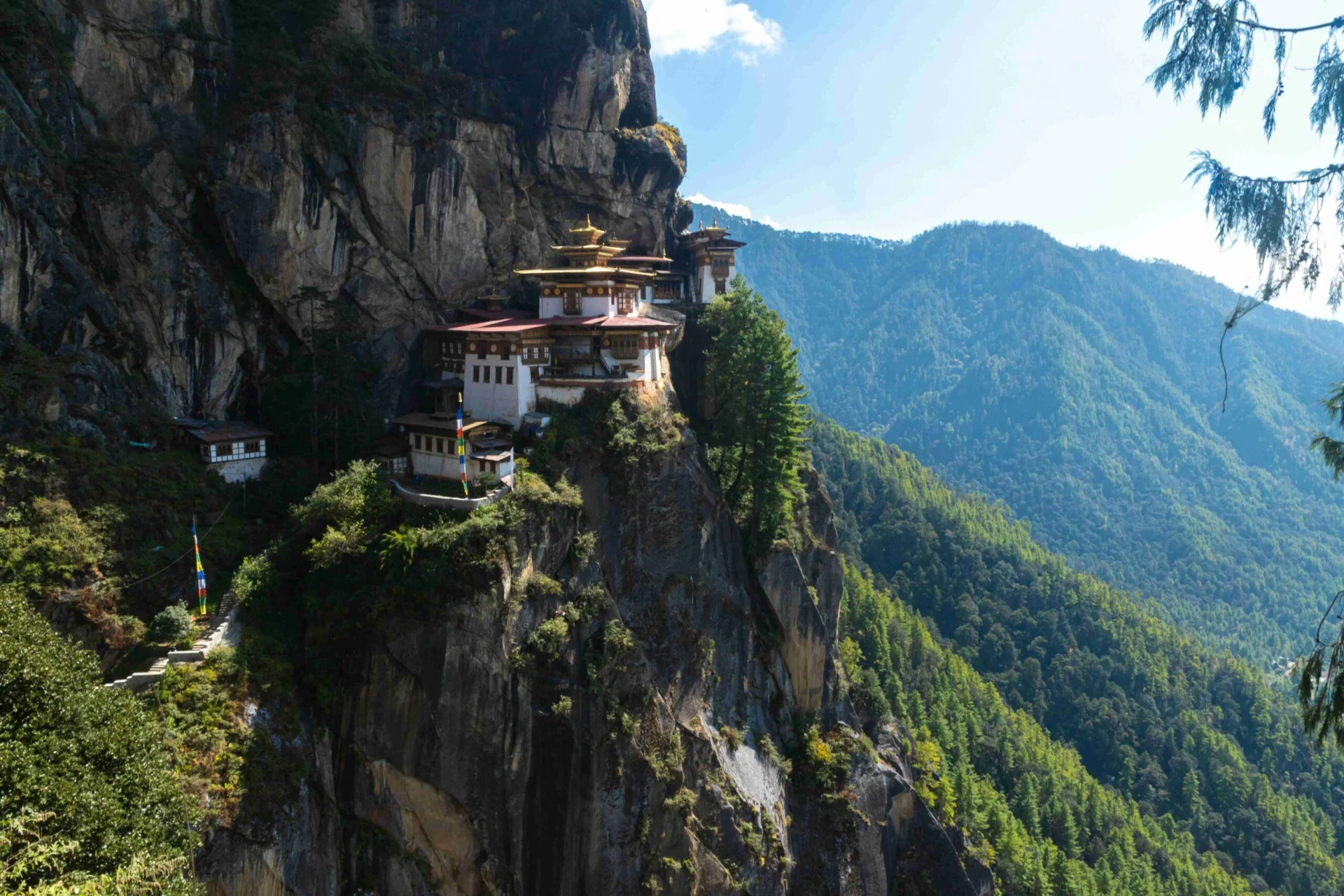
Source: Photo by Ugyen Tenzin on Unsplash
Are you looking forward to a spiritual journey infused with adventure? A trip to Bhutan from India offers the perfect opportunity for a meaningful pilgrimage. With the added advantage of visa-free entry for Indian travelers, Bhutan has become an accessible destination for those seeking tranquility and exploration.
This kingdom is home to numerous significant Buddhist monasteries where spirituality beautifully intertwines with nature. However, be prepared for walking and hiking to reach these sacred sites.
While having a tour guide during your visit is mandatory, this requirement does not limit your experience. Having a knowledgeable guide can deepen your understanding of Bhutan’s rich culture and history, providing valuable insights that make your journey all the more rewarding.
1. Paro Taktsang (Tiger’s Nest Monastery)
Are your joints ready for an adventure? Paro Taktsang, known as Tiger’s Nest Monastery, awaits you at over 3,000 meters. This breathtaking monastery is not just a stunning architectural marvel; it holds deep spiritual significance as the site where Guru Rinpoche , the revered figure who introduced Buddhism to Bhutan, meditated for three years, three months, three weeks, and three days in a cave.
Wear comfortable walking shoes and dress in layers as you prepare for the hike. A jacket and water are essential for staying hydrated during breaks. Along the trail, you’ll find rest stops and tea houses where you can recharge. The trek is included in any Bhutan itinerary, making it both a challenging and rewarding experience.
Tiger’s Nest is considered one of the best photography spots in Bhutan, offering breathtaking views of the surrounding mountains and valleys. The unique perspective of the monastery perched to the cliffside makes for incredible photos.
2. Dochula Pass
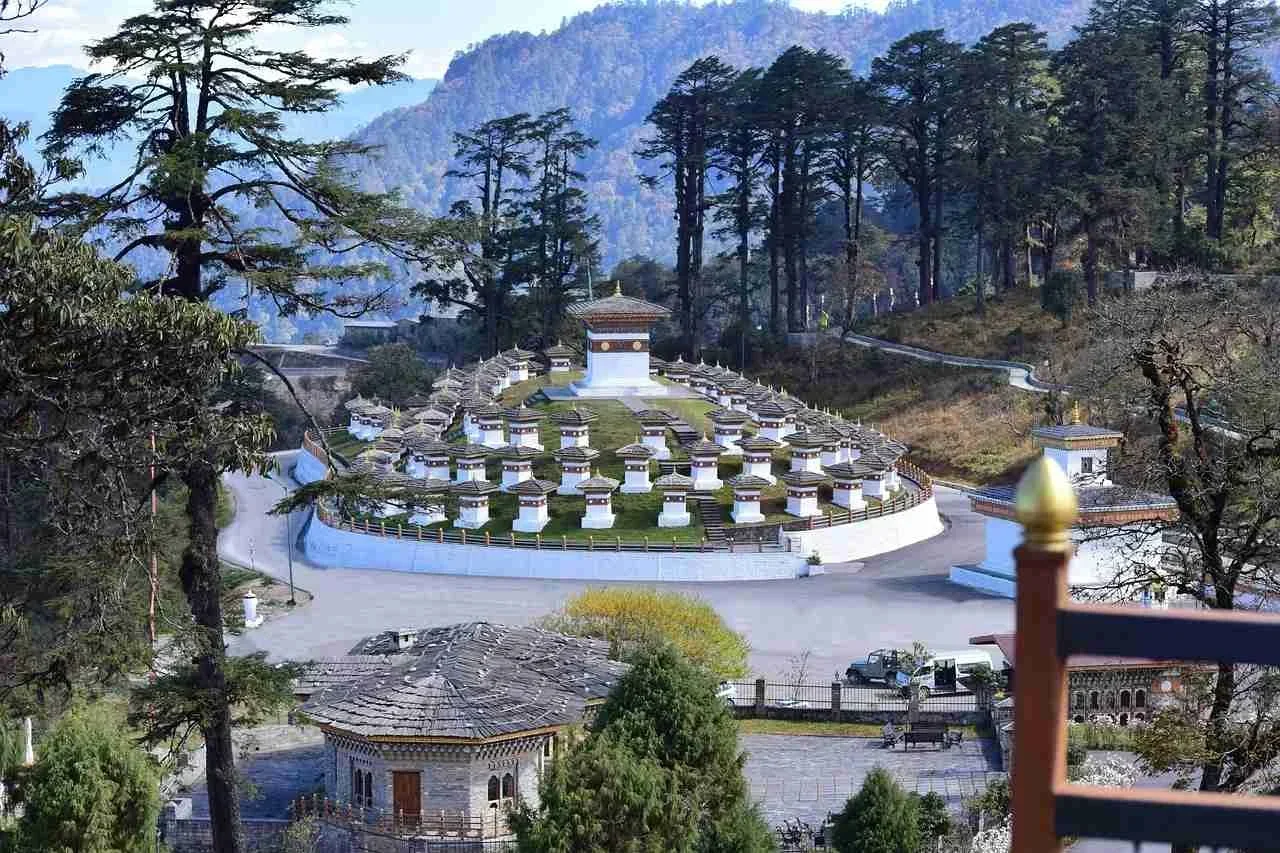
Source: Image by Suket Dedhia from Pixabay
As you travel from Thimphu to Punakha, you’ll encounter the Dochula Pass, one of Bhutan’s most significant attractions. Perched at an impressive altitude of 3,100 meters, this mountain pass is renowned for its stunning views and rich history.
At Dochula Pass, you will find the 108 memorial chortens , also known as Druk Wangyal Chortens, commissioned by Ashi Dorji Wangmo Wangchuck, the eldest Queen Mother of Bhutan. These chortens honor the brave Bhutanese soldiers who lost their lives during a military operation against insurgents in southern Bhutan in 2003. The serene arrangement of these stupas symbolizes peace and serves as a poignant reminder of sacrifice.
3. Punakha Dzong
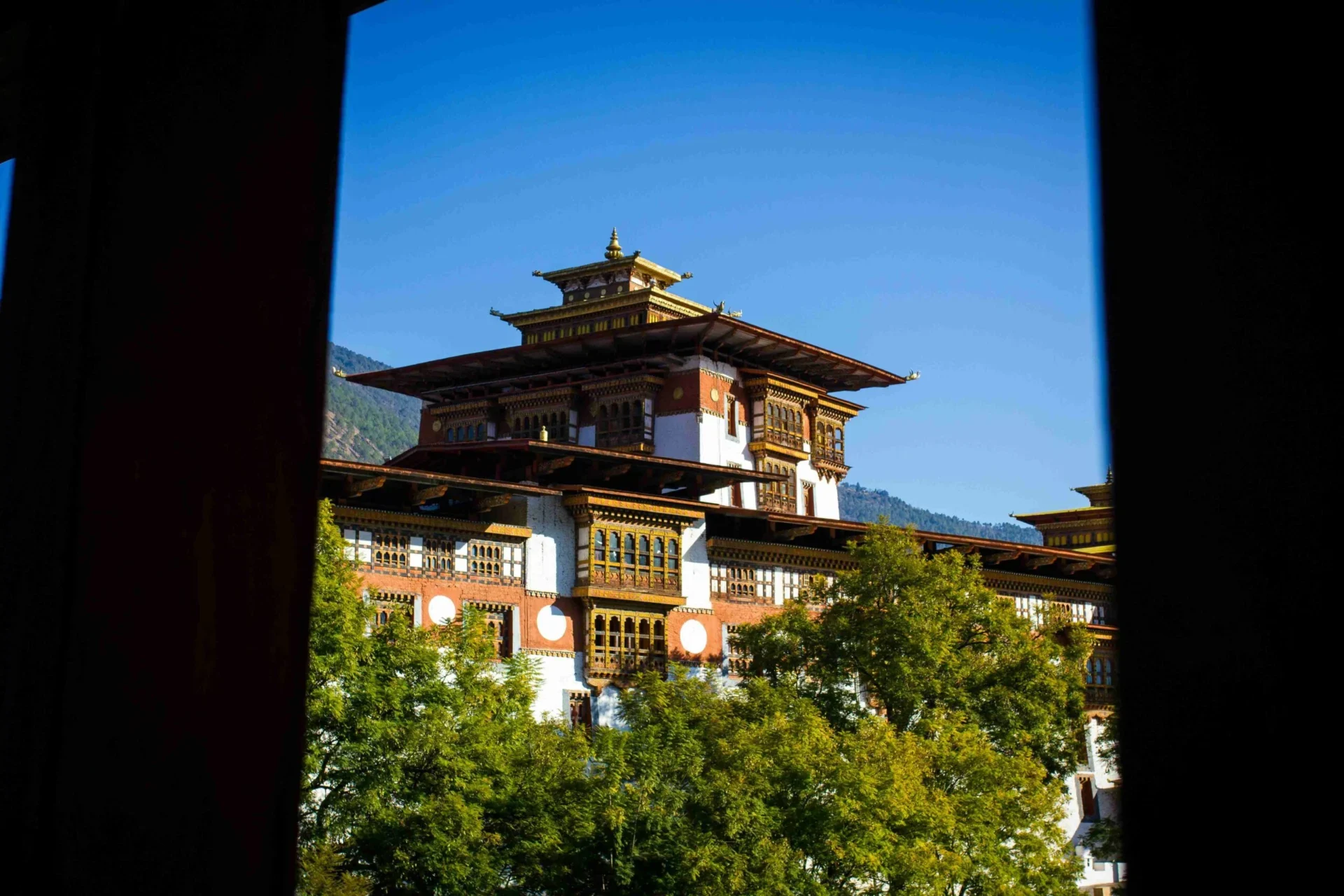
Source: Photo by Gaurav Bagdi on Unsplash
This majestic fortress, also known as the “Palace of Great Happiness,” is an example of Bhutanese architecture and symbolizes the country’s rich history.
Constructed in 1637 by Ngawang Namgyal, the first Zhabdrung Rinpoche, Punakha Dzong is the second oldest and second largest dzong in Bhutan. It was strategically built at the confluence of the Pho Chhu (Father River) and Mo Chhu (Mother River), making it a beautiful sight and a vital regional administrative center.
The dzong has withstood numerous challenges, including devastating fires and earthquakes , yet it remains a testament to Bhutanese resilience and architectural brilliance.
4. Buddha Dordenma Statue in Thimphu
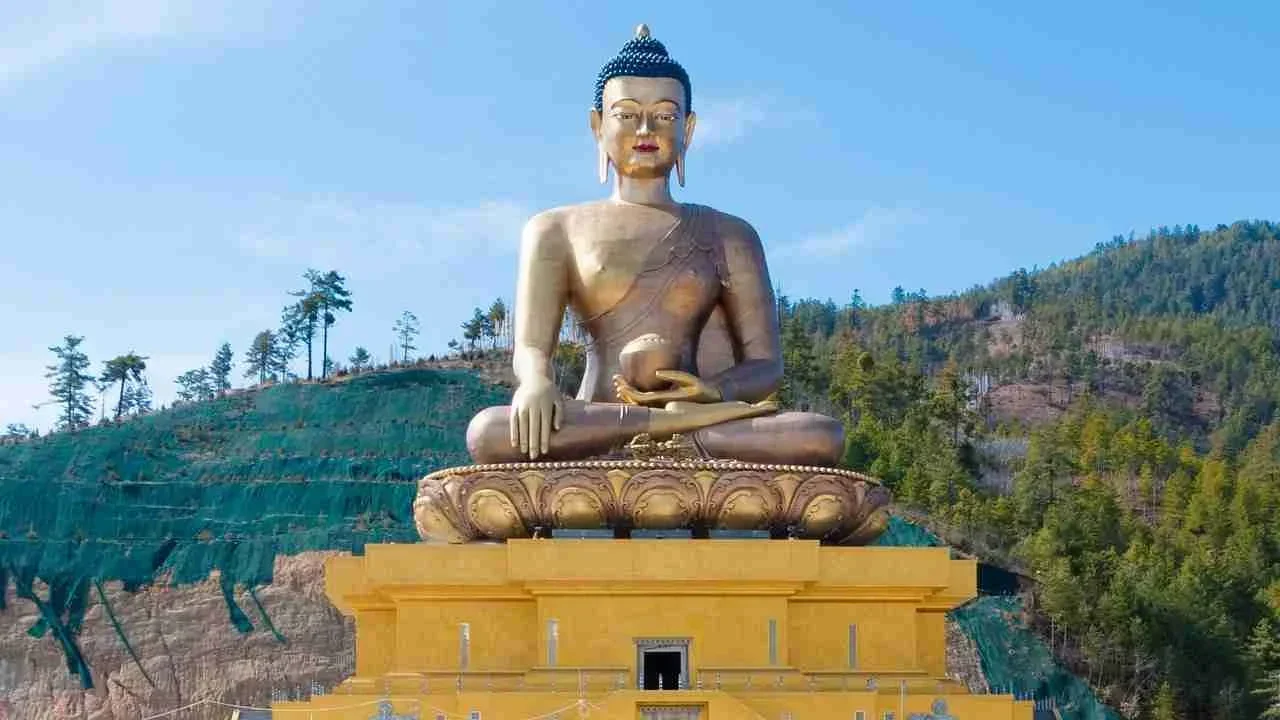
Source: Image by Pradip Kar from Pixabay
As you begin your journey in Bhutan, the capital city of Thimphu welcomes you with a wealth of attractions, including Tashichho Dzong and Thimphu Chorten. However, the standout landmark is undoubtedly the Buddha Dordenma Statue. Towering majestically at 54 meters, this magnificent statue is one of the largest sitting Buddha statues in the world. It is crafted from bronze and coated in gold, giving it a stunning glow that can be seen from various points in the valley.
The Buddha Dordenma Statue is not just an architectural marvel; it holds deep cultural and spiritual significance. It was constructed to commemorate the 60th birthday of the Fourth King of Bhutan, Jigme Singye Wangchuck , and fulfills ancient prophecies that foretold the creation of a giant Buddha statue to bless the world with peace and happiness.
Inside the statue, you’ll find an impressive collection of 125,000 smaller Buddha statues, each meticulously crafted from bronze and gilded in gold. This unique feature adds to the statue’s spiritual depth and reinforces its role as a beacon of tranquility.
5. Phobjikha Valley
Phobjikha Valley, located in the Wangdue Phodrang District of central Bhutan, is situated at an elevation of approximately 3,000 meters. This glacial valley is a vital wintering ground for the endangered black-necked crane (Grus nigricollis), which migrates from the Tibetan Plateau.
Each year, these graceful birds arrive in late October, creating a spectacular sight as they circle the Gangtey Monastery before settling in for the winter. The valley’s unique ecosystem, characterized by marshy land and lush grassy pastures, provides an ideal habitat for these creatures.
In addition to its natural allure, Phobjikha Valley is known for its agricultural significance, particularly in potato production. The surrounding villages thrive on farming, with locals cultivating potatoes, turnips, and other crops. The landscape is dotted with traditional farmhouses, offering a glimpse into the harmonious lifestyle of the residents who have lived in this serene environment for generations.
Additional Top Attractions in Bhutan
If you have extra time to explore Bhutan, consider adding these attractions to your itinerary:
Bumthang Valley
Bumthang Valley, the largest valley in Bhutan, is a treasure trove of spiritual and natural wonders. This region is home to several historic monasteries, including Kurjey Lhakhang and Jakar Dzong, which are steeped in legend and tradition. As you wander through the valley, don’t miss the chance to sample Red Panda wheat beer from Bumthang Brewery, Bhutan’s only brewery, known for its unique flavors that reflect the local culture.
Haa Valley
Haa Valley should be on your list for those who love hiking and immersing themselves in nature. Although a smaller district, it boasts stunning trails that wind through lush landscapes and traditional villages. The region is home to the Jigme Khesar Strict Nature Reserve , one of Bhutan’s protected areas, where you can experience the country’s rich biodiversity firsthand.
Bhutan’s National Parks
Bhutan is renowned for its commitment to preserving biodiversity; its national parks are a testament to this effort. Here are a few notable ones:
- Jigme Dorji National Park: This expansive park is home to diverse wildlife, including yaks and various bird species. It offers numerous trekking routes that allow visitors to immerse themselves in the natural beauty of Bhutan.
- Royal Manas National Park: Recognized as a UNESCO World Heritage Site, this park features rich flora and fauna, including elephants and tigers. It’s an excellent destination for wildlife enthusiasts looking to explore Bhutan’s natural wonders.
Experiencing Bhutan’s natural beauty firsthand significantly enriches your spiritual journey.
Visit Bhutan for a Meaningful Journey
Take advantage of the visa-free entry for Indian nationals to explore the top attractions in Bhutan. While visiting these remarkable sites, be prepared for entrance fees, as many of these experiences contribute to preserving Bhutan’s cultural heritage.
If you’re eager for a road trip and hold an International Driving Permit , you might consider planning your next adventure on the open road. However, having a tour guide and driver for your journey in Bhutan will enhance your experience significantly.
FAQs
When is the best time to visit Bhutan to see these attractions?
The best time to visit Bhutan to explore its top attractions is during the spring (March to May) and autumn (September to November) seasons.
For those interested in seeing the black-necked cranes in Phobjikha Valley, the best time to visit is between late October and mid-February, when these magnificent birds migrate to the valley.
Are there any entry fees for visiting these attractions?
Yes, many attractions in Bhutan have nominal entry fees. For example, visiting dzongs may require a small fee, while some monasteries might charge a fee for maintenance. It’s advisable to carry cash for these expenses.
Is it possible to visit multiple attractions in one day?
Yes, visiting multiple attractions in one day, especially those close to each other, like Paro Dzong and the National Museum, is feasible. However, planning your itinerary efficiently is essential to maximize your time.
What should I wear when visiting religious sites?
Visitors should dress modestly when visiting religious sites. For men, long pants and shirts with sleeves are recommended; women should wear long skirts or pants and cover their shoulders. It’s also customary to remove shoes before entering temples.
Can I take photographs at all attractions?
While photography is allowed at most attractions, some religious sites may have restrictions. Always check for signs indicating photography rules and be respectful of local customs
How can I travel between these attractions?
Traveling between attractions can be done via hired taxis or private vehicles arranged through tour operators. Public transport options are limited, so it’s best to plan your transportation ahead of time for convenience.

